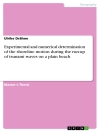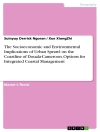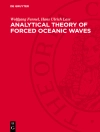This book presents an overview of the techniques available today for the removal of fluoride contamination/pollutants/species from water. Also covered are traditionally applied techniques for the removal of fluoride pollutants/species, including oxidation, coagulation-flocculation, and membrane techniques. Recently, progress has been made on the utility of various nanoparticles for the extraction of contaminants from water. Fluoride contamination is affecting water resources quality worldwide as a result of human activities, such as mining and pesticide use. Due to the high risk of fluoride exposure, specific water treatment processes are required to meet more severe water quality standards. A better understanding of currently available processes is necessary to develop economical, efficient, and effective methods for fluoride removal. Fluoride can either be coated, adsorbed using a wide range of both mineral and organic constituents or can be directly rejected by membrane processes, such as reverse osmosis and nanofiltration. Recent developments of submerged hybrid membrane systems, such as membrane bioreactors in wastewater treatment, provide alternative technologies for fluoride treatment.
Inhoudsopgave
Introduction.- Part-I: Remediation and management strategies.- Chapter 1: Fluoride contamination in water and its management.- Chapter 2: Fluoride pollution control techniques and principles.- Chapter 3: Hybrid phytoremediation of fluoride and its remediation strategies.- Part-II: Fluoride removal treatments.- Chapter 4: Physicochemical and biological methods for the removal of fluoride.- Chapter 5: Removal of fluoride from water through iron-based adsorbents.- Chapter 6: Removal of fluoride from water through fly-ash beds.- Chapter 7: Fluoride removal from industrial wastewater using filtration and chemical precipitation.- Part-III: Fluoride effect on human health.- Chapter 8: Fluoride contamination, health problems and remediation, methods in water: A comprehensive review.- Chapter 9: Effect of fluoride pollution on the living beings with an emphasis on human health hazard.- Chapter 10: Nutritional status and dental fluorosis among humans in communities with different water source fluoride concentrations.- Part-IV: Status, government policy, and environmental regulating bodies.- Chapter 11: Global perspective scenario: fluoride contamination in water.- Chapter 12: Government rules and public involvement of wastewater discharge containing fluoride.- Chapter 13: Future frameworks for fluoride and algorithms for environmental systems.- Part-V: Concluding remarks along with recommendation.
Over de auteur
Akhilesh Kumar Yadav
Present: Department of Environmental Engineering and Management
Chaoyang University of Technology, Taichung, Taiwan
Department of Mining Engineering
Indian Institute of Technology (Banaras Hindu University), Varanasi, India
Environmental Science and Engineering Department
Indian Institute of Technology Bombay, Mumbai, India
Saba Shirin
Present: Department of Environmental Science
School of Vocational Studies and Applied Sciences
Gautam Buddha University, Greater Noida, India
Department of Mining Engineering
Indian Institute of Technology (Banaras Hindu University), Varanasi, India
Vijay P. Singh
Department of Biological and Agricultural Engineering
Texas A&M University
College Station, TX, USA












